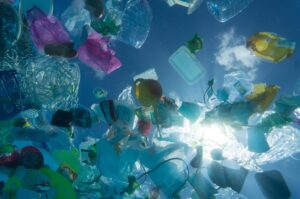Pursuant to a world’s first global estimate ascertaining the degree of microplastics in the oceans’ depth, a study was published in the journal Frontiers in Marine Science by the Commonwealth Scientific and Industrial Research Organisation (CSIRO) on Tuesday which pointed out that the ocean floor is stuffed with 14 million tonnes of microplastics.
The samples used in the research were collected using a robotic submarine at depths of as much as 3,000 metres (9,842 feet) from six different sites in the Great Australian Bight, up to 380 kilometres (236 miles) off the coast of South Australia. By analysing samples collected by employing these methods, the study proposed that the earth’s ocean floor is twice as polluted as the surface.

Plastic pieces smaller than 5 mm (0.19 inches) scraped away by elements into minute fragments have been observed on the ocean bed, suggested researchers. The results infer that deep-sea has 35 times more plastic than is believed to be floating on the surface of the oceans.
“Our research found that the deep ocean is a sink for microplastics. We were surprised to observe high microplastic loads in such a remote location.”
Principal research scientist Denise Hardesty said
The scientists, who published their findings in journal Frontiers in Marine Science, pronounced that areas with more floating rubbish generally had more microplastic fragments on the seafloor.
“Plastic pollution that ends up in the ocean deteriorates and breaks down, ending up as microplastics. The results show microplastics are indeed sinking to the ocean floor.”
Lead author of the study Justine Barrett said
Hardesty has sought immediate action against persisting plastic pollution problem which is a hazard for wildlife, human beings and especially for mass ecosystems.









